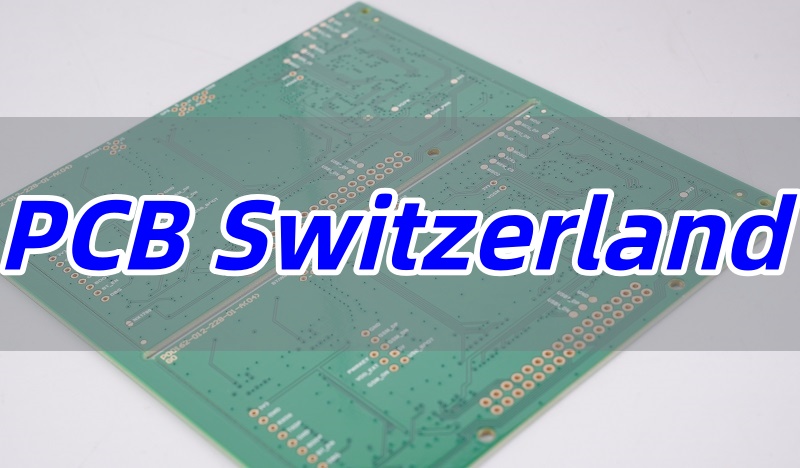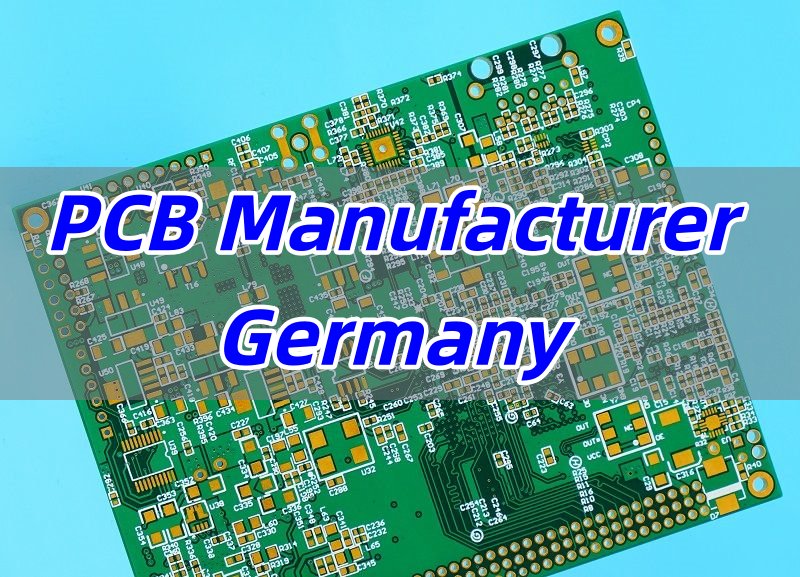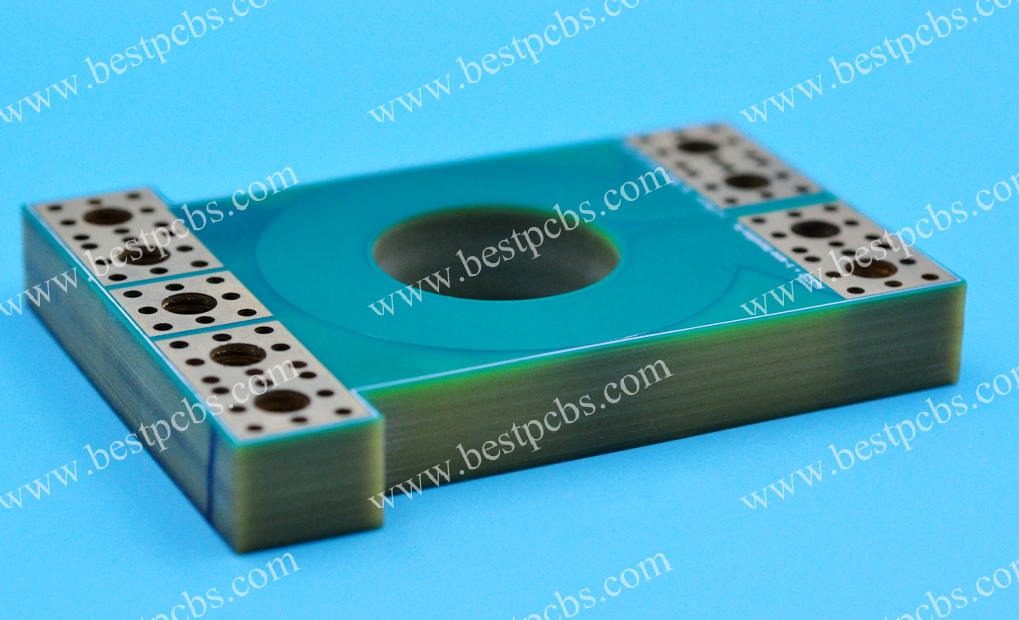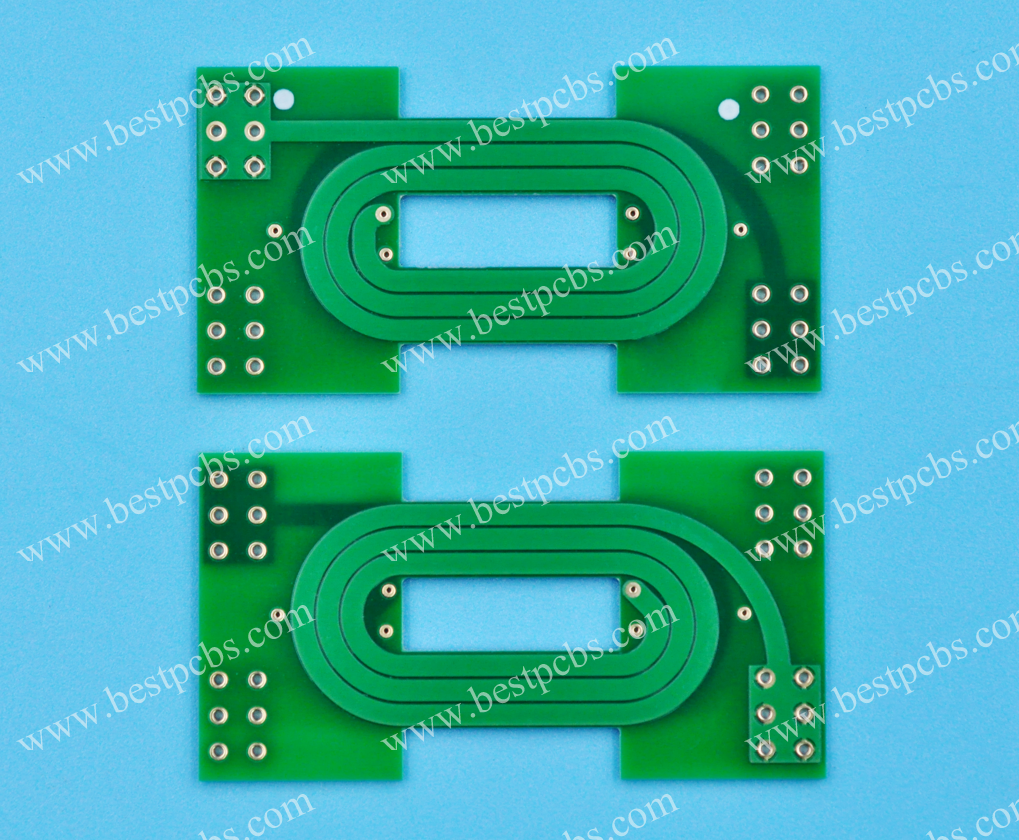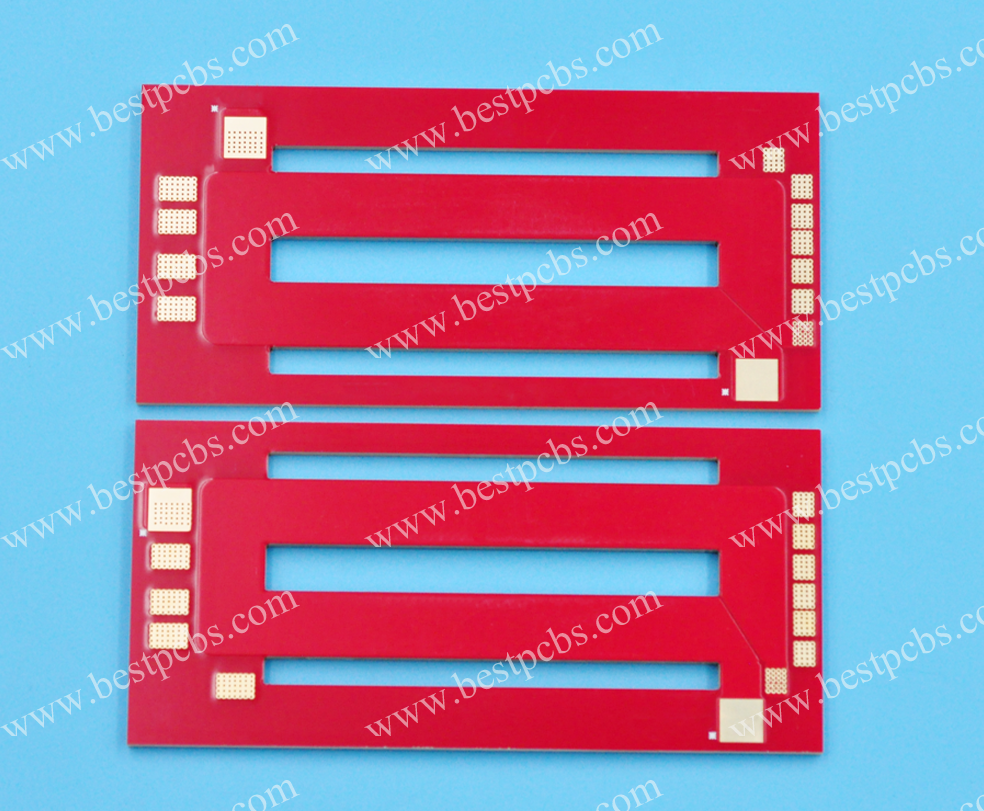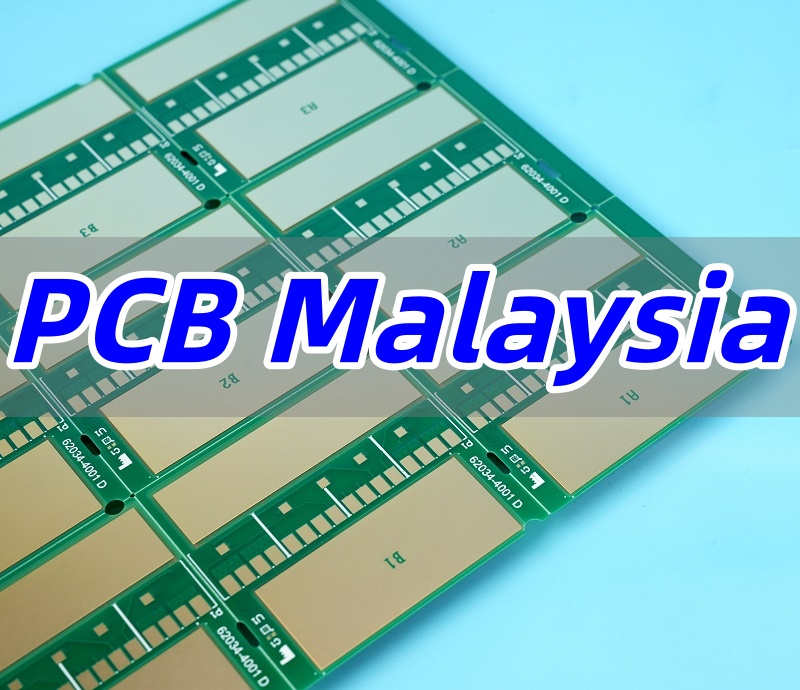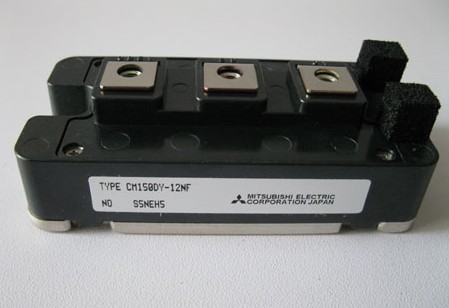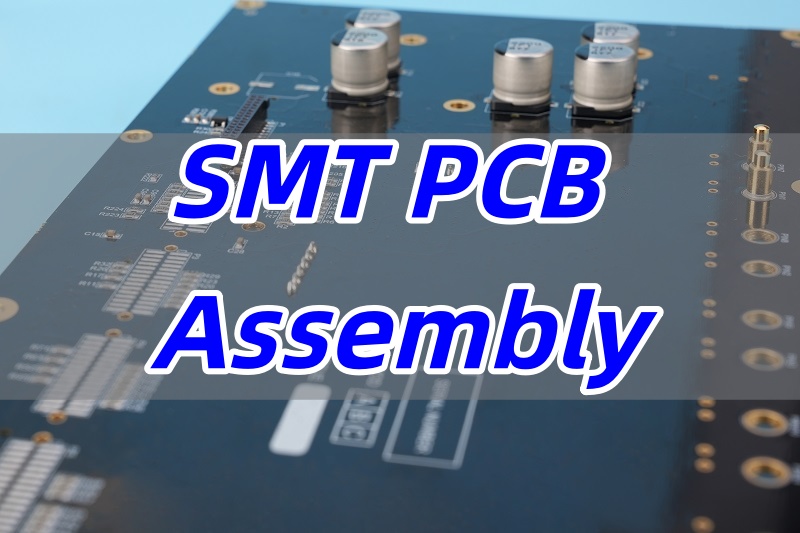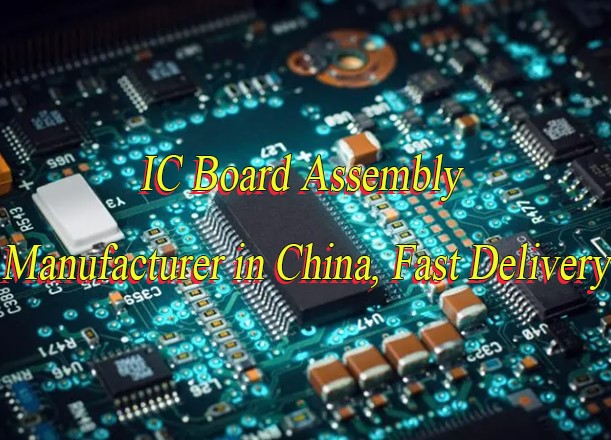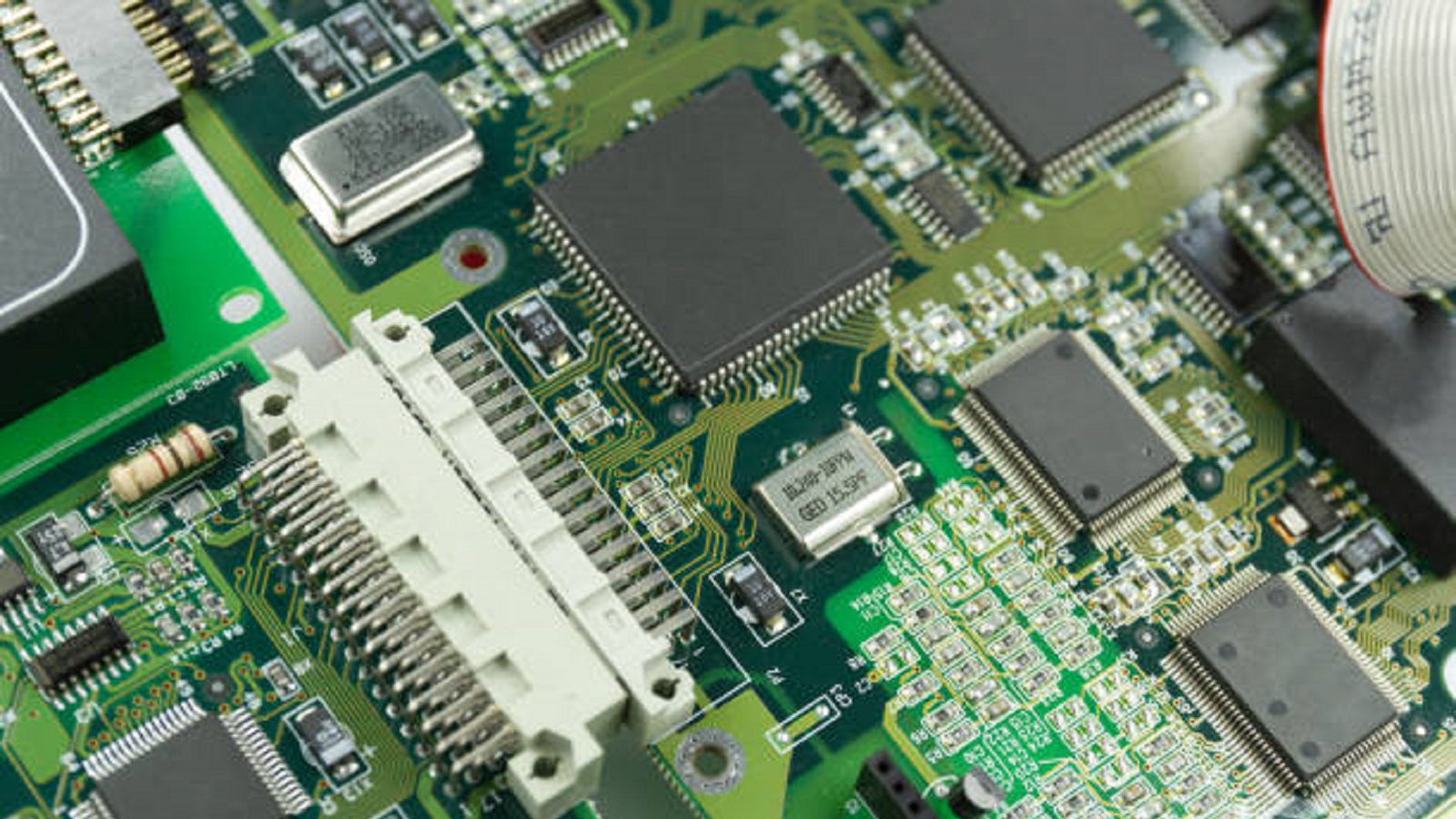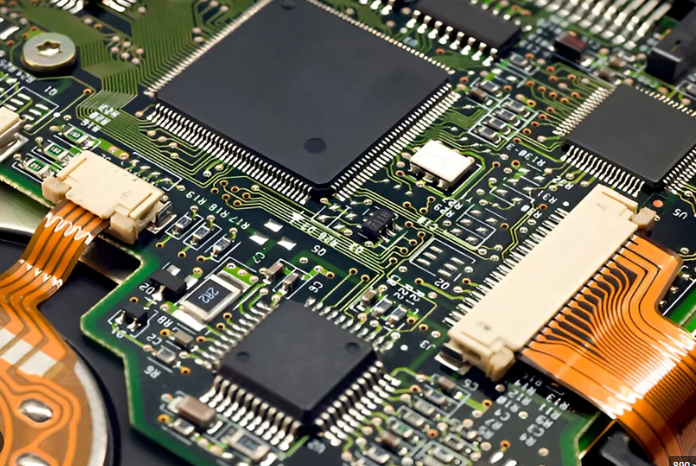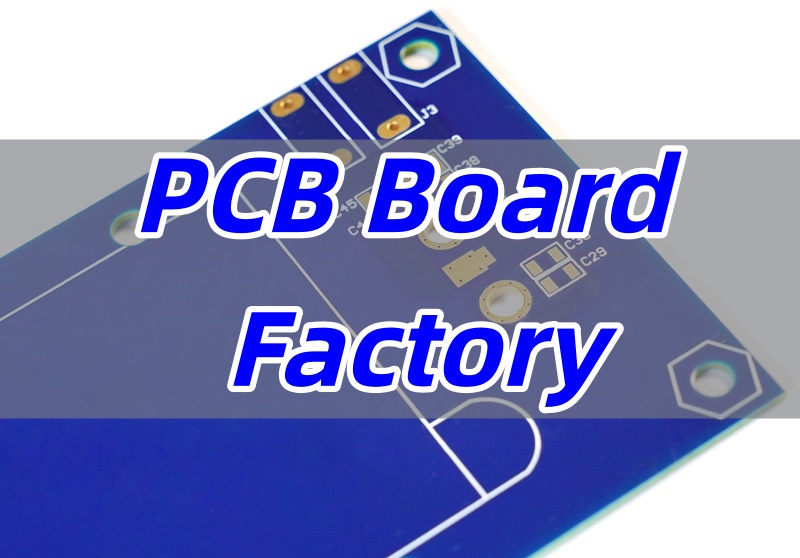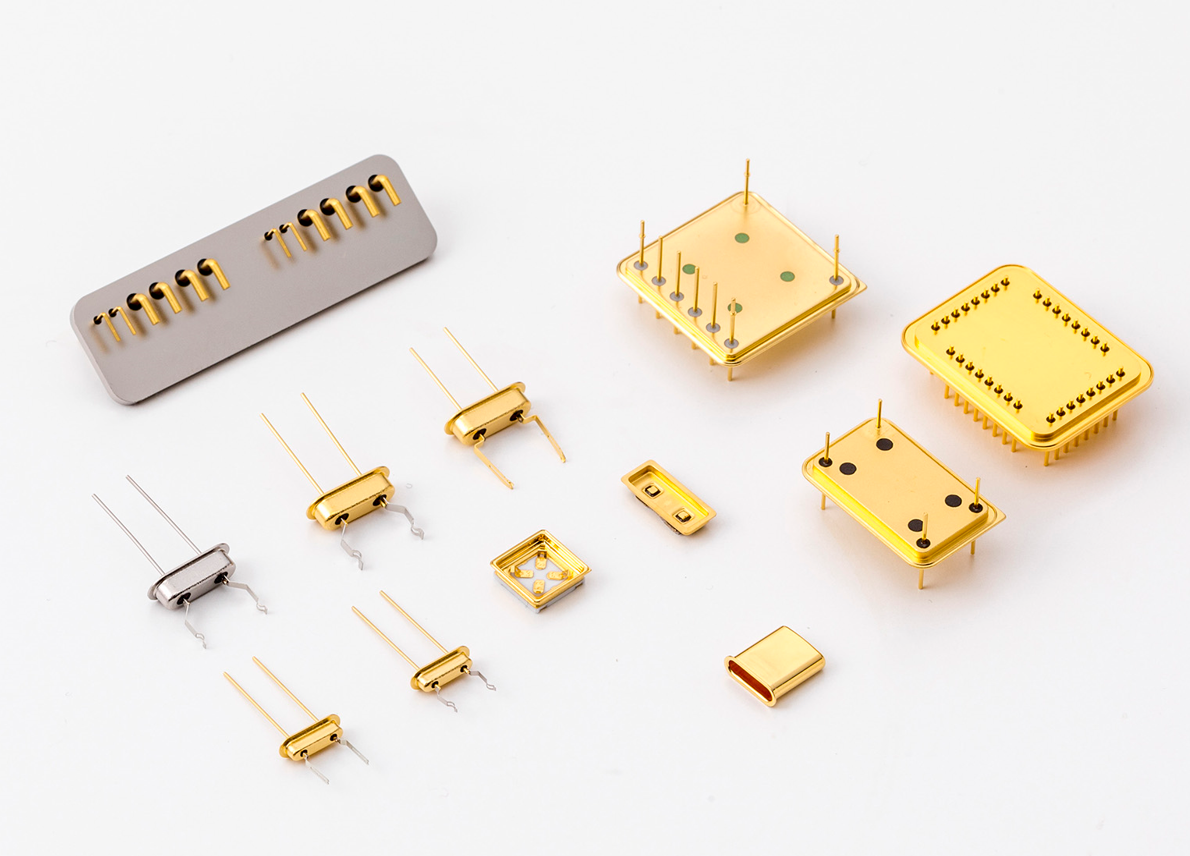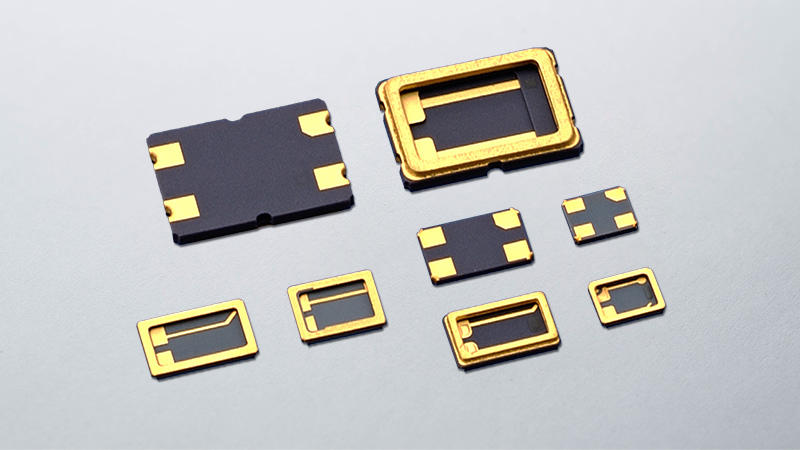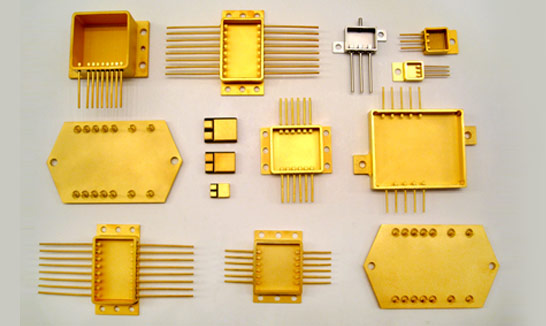Why choose RF microwave PCB? Let’s discover definition, benefits, applications, design spec and layout, recommended PCB manufacturer for RF microwave PCBs.
Are you worried about these problems?
- High-frequency signal loss is high, how to improve RF performance?
- Above 5GHz, interlayer crosstalk is hard to control, how to ensure signal stability?
- High-power device thermal design, how to achieve precise temperature control?
As a RF Microwave PCB manufacturer, Best Technology can provide you service and solutions:
- Substrate customization by frequency band: match low-loss materials with 20% impedance margin to reduce loss.
- Dual-verified impedance control: error within ¬Ī2mil, TDR measured deviation <5%, crosstalk suppressed >20dB.
- Thermal solution: solder pad + via array + 2oz copper top/bottom layers, thermal resistance <5‚ĄÉ/W, hotspot temperature <85‚ĄÉ.
Welcome to contact us if you have any request for microwave RF PCB: sales@bestpcbs.com.
What Is RF Microwave PCB?
RF Microwave PCB is a specialized circuit board designed for carrying and processing high-frequency signals, typically covering radio frequency (RF) from approximately 300 kHz to 300 GHz and microwave frequencies from 1 GHz to 300 GHz.
Unlike conventional PCBs, it utilizes high-frequency substrate materials such as Rogers, Teflon, or ceramic-filled composites. These materials feature extremely low signal loss, stable dielectric constant, and excellent thermal performance. Its design and manufacturing are highly precise, emphasizing signal integrity through exact control of trace impedance, optimized transmission line structures like microstrip and stripline, minimized parasitic effects, and strict regulation of laminate processes and surface treatments. This ensures efficient, low-distortion, and low-interference transmission of high-frequency or microwave signals on the board.
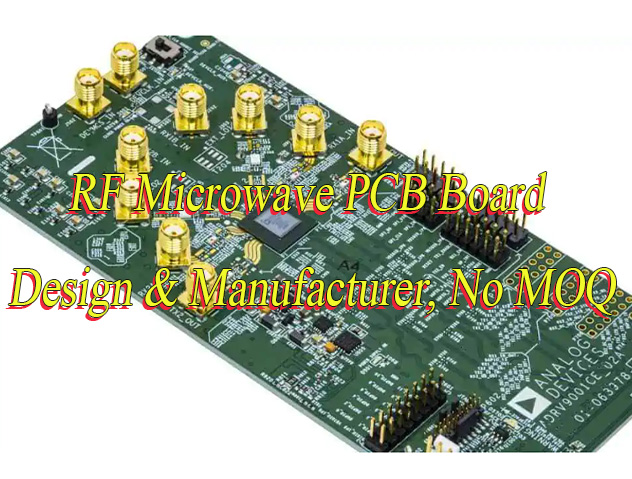
Why Choose RF Microwave PCB?
Benefits of RF Microwave Printed Circuit Board:
- Stable High-Frequency Signal Transmission: Utilizes low-loss substrates and precise impedance control technology to support GHz-level high-frequency signal transmission. This reduces signal attenuation and crosstalk, ensuring signal integrity in high-speed scenarios such as 5G communications, radar, and satellite equipment, thereby enhancing the reliability of terminal products.
- Reduced System Energy Consumption and Heat Dissipation Pressure: Optimizes circuit layout and high-performance dielectric materials like PTFE and ceramic-filled composites to achieve low insertion loss and efficient thermal management. This minimizes energy waste, lowers device heat generation, extends product lifespan, and reduces cooling module costs.
- Compact Design for Miniaturization Needs: Enables high-density multi-layer routing to integrate complex RF modules. This allows precise arrangement of high-frequency components such as filters and amplifiers within limited space, meeting stringent miniaturization and lightweight requirements for smartphones, IoT devices, and other applications, boosting market competitiveness.
- Superior Anti-Interference and Electromagnetic Compatibility: Incorporates shielding layers, optimized grounding, and electromagnetic simulation validation to effectively suppress high-frequency noise and external interference. This ensures stable device operation in complex electromagnetic environments like industrial control and automotive electronics, reducing failure rates and customer maintenance costs.
- Accelerated Product Development Cycle: Standardized design processes and mature manufacturing techniques such as laser drilling and electroplating via filling shorten prototype verification and mass production timelines. Combined with Design for Manufacturability (DFM) guidance, this reduces trial production iterations, helping clients seize market opportunities and lower overall development costs.
- Significant Long-Term Cost Efficiency: Although initial material and process costs are higher, the high reliability, low failure rate, and long-term stability result in reduced repair and replacement frequencies, lowering the total lifecycle cost. This makes it particularly suitable for high-reliability sectors like medical and aerospace applications.
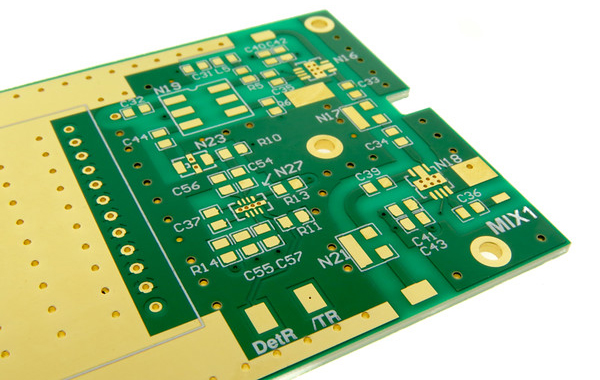
When to Use RF Microwave PCB Board?
Applications of RF Microwave PCB Board:
- 5G/6G Communication Base Stations: 5G Massive MIMO Antenna Array (AAU), Base Station RF Front-End Module, Millimeter Wave Small Cell.
- Satellite Communication Systems: Satellite Onboard Transponder, Ground Station Antenna Feed Network, Low-Earth Orbit Satellite Constellation Terminal.
- Radar Systems: Automotive 77GHz Millimeter Wave Radar, Military Phased Array Radar, Weather Radar Antenna Feeder.
- Aerospace Electronics: Airborne Radar System, Satellite Navigation Receiver (GPS/BeiDou), Aircraft Communication Data Link.
- Microwave Test Instruments: Spectrum Analyzer Signal Processing Module, Network Analyzer Test Port, High-Frequency Signal Generator.
- Medical Devices: Microwave Ablation Therapy Probe, Medical MRI RF Coil.
- Wireless Infrastructure: Microwave Backhaul Equipment (Point-to-Point Transmission), Indoor Distribution System Combiner.
- Automotive Electronics: V2X Vehicular Communication Module (5.9GHz), In-Vehicle Satellite TV Receiver.
RF Microwave PCB Design Technical Parameter
| Parameter Name | Typical Value/Range |
| Impedance Control | 50ő© (Common) / 75ő© (Video) |
| Dielectric Constant (őĶ) | 2.2-10 (FR4: 4.3-4.8) |
| Loss Tangent (tanőī) | 0.001-0.025 (High-frequency Boards <0.005) |
| Substrate Thickness | 0.2-3.2mm |
| Copper Foil Roughness | Ra<0.5őľm (High-frequency Applications) |
| Glass Fiber Effect | Weave Density >7628 |
| Thermal Expansion Coefficient (CTE) | X/Y Axis <18ppm/‚ĄÉ, Z Axis <50ppm/‚ĄÉ |
| Thermal Conductivity | 0.3-2W/(m·K) |
| Surface Finish | ENIG/Immersion Silver/OSP |
| Line Width Tolerance | ¬Ī10% (Conventional)/¬Ī5% (High-frequency) |
| Layer-to-Layer Alignment Accuracy | ¬Ī25őľm (Multilayer Boards) |
| Dielectric Uniformity | őĒőĶ<5% |
RF Microwave PCB Board Design & Layout
1. Substrate Selection and Characteristic Matching
- Material Expansion Selection: For high-frequency scenarios, recommend Rogers RO4350B, Taconic TLX series; for high-precision scenarios, select Panasonic Megtron 6 (Dk=3.3¬Ī0.05, lossÔľú0.002@10GHz) or Isola I-Tera MT40 (Dk=3.45, lossÔľú0.003@5GHz). FR-4 is limited to low-frequency test boards or cost-control scenarios, requiring gold-plating/immersion silver to reduce surface roughness impact.
- Dynamic Parameter Verification: Use Agilent 85070D Dielectric Constant Tester to measure Dk values, combined with temperature-humidity aging tests to verify long-term stability. Thickness tolerance control requires collaboration with substrate supplier capabilities (e.g., ¬Ī5% high-end substrates), and design margin is increased to 25% to address processing errors.
- Special Scenario Adaptation: Millimeter-wave (Ôľě30GHz) applications recommend Liquid Crystal Polymer (LCP) substrate (Dk=3.0, lossÔľú0.0015), paired with microvia arrays for ultra-low loss transmission.
2. Precise Impedance Control and Verification
- Multidimensional Calculation Verification: Cross-validate using Polar SI9000 and Altium Designer 2D/3D impedance calculators. For non-standard impedances (e.g., 75ő© video signals), optimize line width/dielectric thickness combinations via Taguchi method to ensure process window ‚Č•¬Ī3mil.
- TDR In-Depth Application: Set reference planes near TDR test points, measure single-ended/common-mode impedance via differential probes, and synchronously verify signal integrity metrics (rise timeÔľú20ps). For high-speed digital-RF hybrid circuits, use eye diagram instruments to validate timing margins.
- Differential Pair Optimization: For serpentine differential pairs, validate bending radius impact on impedance via electromagnetic simulation, ensuring length matching errorÔľú0.5mil@10GHz.
3. Stack-Up Structure Optimization Design
- Multilaminate Expansion Scheme: 8-layer boards recommend “Signal-GND-Power-Signal-Power-GND-Signal-Signal” structure with dual GND layers in the middle for dual shielding. 4-layer boards are only suitable for low-power RF modules, requiring blind/buried via technology for interlayer interconnection.
- Interlayer Coupling Suppression: Insert low-dielectric isolation layers (e.g., Arlon AD300) between adjacent signal layers to reduce interlayer crosstalkÔľě20dB. Power-GND spacing is optimized via finite element analysis to ensure capacitance couplingÔľě90%.
- Mixed-Signal Processing: For digital-RF hybrid circuits, use “island GND” technology to isolate digital noise, paired with beads/inductors to construct low-pass filter networks.
4. Signal Path Layout Specifications
- Trace Process Refinement: Use tapered line width technology for smooth impedance transition (e.g., 50ő© to 75ő©) to avoid impedance discontinuity reflections. For microwave signals, adopt coplanar waveguide (CPW) structure with ground via arrays forming a continuous reference plane.
- Via Optimization Design: Laser microvia technology achieves 0.1mm microvias, paired with back-drilling to eliminate stubs. High-frequency vias require parasitic parameter verification via Ansys Q3D to meet design thresholds.
- Shielding Structure Upgrade: Set electromagnetic shielding walls around critical signal paths, using nickel/gold plating to enhance shielding effectiveness. For radiation-sensitive devices, use shielding covers + thermal gel composite heat dissipation solutions.
5. Grounding and Shielding Strategies
- Hybrid Grounding Enhancement: Low-frequency modules use “star grounding” to the main ground terminal; high-frequency modules use “mesh grounding” to reduce ground bounce noise. RF front-end modules adopt “GND-Signal-GND” sandwich structure for dual shielding.
- Shielding Effectiveness Verification: Use EMxpert near-field scanner to measure shielding effectivenessÔľě60dB@1GHz. Sensitive devices require 3D electromagnetic simulation to validate shielding structure effectiveness.
- Ground Via Arrays: Adopt “honeycomb” via array layout with spacing‚ȧőĽ/20@operating frequency to form a continuous Faraday cage. Vias require plating fill technology to enhance reliability.
6. Power Integrity Optimization
- Decoupling Capacitor Strategy: “0.01őľF high-frequency + 10őľF low-frequency” capacitor combinations paired with beads to construct multi-stage filter networks. Power noise-sensitive devices use embedded capacitor technology (e.g., buried capacitor layers).
- PDN Simulation Enhancement: Use Ansys SIwave for full-wave electromagnetic simulation to verify PDN impedanceÔľú0.5ő©@3GHz. High-frequency power noise uses power plane segmentation + capacitor bridging technology.
- Power Plane Optimization: Mesh copper pour enhances current carrying capacity, paired with thermal vias for thermal-electrical co-design. Power planes are validated via voltage drop simulation to ensure dropÔľú3%.
7. Thermal Management and Heat Dissipation Design
- Heat Dissipation Structure Upgrade: High-power devices use “thermal pad + thermal via + heat sink” three-tier cooling solutions, paired with thermal interface materials to achieve thermal resistanceÔľú5‚ĄÉ/W. Millimeter-wave devices use diamond heat sink substrates.
- Thermal Simulation Verification: Use Ansys Icepak for thermal simulation to validate hotspot temperatureÔľú85‚ĄÉ. For high-density layouts, use thermal-electrical-structural co-simulation to ensure thermal stressÔľúmaterial yield strength.
- Copper Thickness Selection: Top/bottom layers use 3oz copper for enhanced thermal diffusion; inner layers use 1oz copper to balance cost and performance. Extreme environment applications use gold-plating/immersion silver for corrosion resistance.
8. Design for Manufacturability and Testability
- DFM Check Expansion: Includes line width uniformity, pad size consistency, minimum annular ring verification, etc. Use Valor NPI software for automated checks to meet IPC-6012 standards.
- Test Point Deepening Design: Use 50ő© SMA interfaces paired with calibration kits for precise testing. High-speed digital signals use differential test points paired with eye diagram instruments for timing validation.
- File Delivery Expansion: Includes complete Gerber files (impedance layer, pad layer, silkscreen layer, stencil layer) paired with process specification documents (back-drill depth, blind/buried via positions). Use Git version control for document traceability.
9. Simulation Verification and Document Delivery
- Simulation Tool Expansion: Besides ADS/HFSS, use Keysight ADS Momentum for planar electromagnetic simulation or ANSYS HFSS 3D Layout for full-wave simulation. For time-domain response validation, use SPICE models paired with eye diagram instruments.
- Document Package Enhancement: Includes design specifications, simulation reports, Gerber files, BOM lists, process specification documents, test reports, etc. Use PDF/A format for long-term readability, paired with digital signatures for tamper-proof validation.
- Risk Management Strengthening: Use FMEA tools for risk assessment, clarify potential failure modes (crosstalk, hotspots, soldering defects) and solutions. Establish design change tracking systems to ensure all changes are validated and documented.
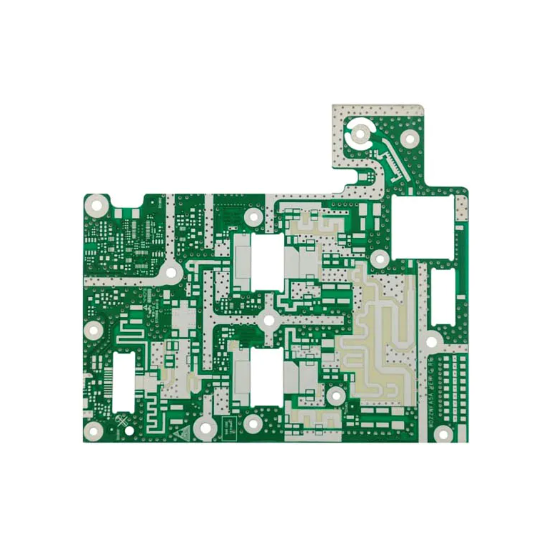
Why Choose Best Technology as RF Microwave PCB Board Manufacturer?
Reasons why choose us as RF microwave PCB board manufacturer:
- International Certification Assurance: Holds ISO 9001 quality management system certification and complies with industry-mandated certifications (e.g., medical, automotive, RoHS), ensuring product compatibility with global stringent application scenarios.
- Free DFM Design Verification: Offers free Design for Manufacturability (DFM) analysis to identify and resolve potential design issues early, reducing development costs and risks while ensuring first-pass manufacturing success.
- Competitive Pricing: Achieves cost control through optimized production processes and supply chain management, delivering cost-effective RF microwave PCB solutions particularly suitable for budget-sensitive projects.
- 24-Hour Rapid Prototyping: Supports sample production within 24 hours, enabling quick response to customer needs, shortened R&D cycles, and market opportunity capture, ideal for urgent project validation.
- Flexible Low-MOQ and Small-Batch Production: Accepts low minimum order quantities (MOQ) and small-batch orders to meet R&D testing, small-scale production, or customization needs, reducing customer inventory pressure and capital tie-up.
- Strict Full-Process Quality Control: Implements end-to-end quality control from raw material inspection, production monitoring, to final product testing, ensuring each PCB meets high reliability standards and minimizes defect rates.
- Expert Technical Team Support: Features a team of experienced RF microwave engineers providing full-process technical support from design optimization and material selection to process adjustments to resolve complex technical challenges.
- Efficient Supply Chain Management: Collaborates deeply with high-quality raw material suppliers to ensure stable material supply and rapid delivery, coupled with optimized production scheduling for on-time and reliable delivery.
- Customized Service Capability: Offers tailored solutions for special requirements, including high-frequency material selection, impedance control optimization, and specialized surface treatments, to meet diverse project needs.
- Responsive Customer Service: Provides 24/7 customer support for quick responses to inquiries, order tracking, and after-sales issues, delivering professional advice and solutions to enhance customer experience and trust.
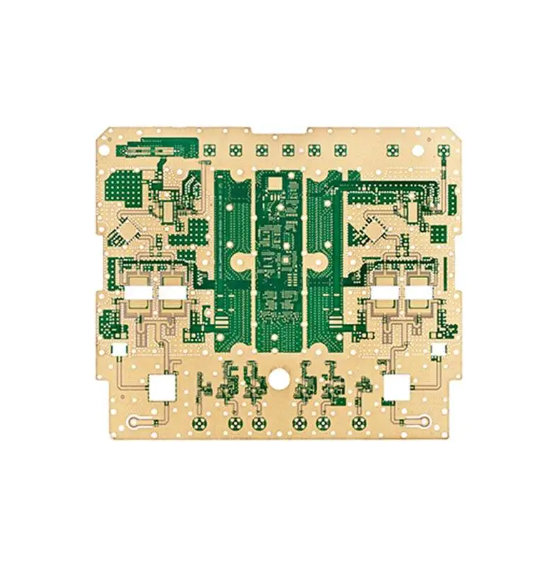
Our RF Microwave PCB Capabilities
| Parameter | Specification |
| Base material: | Rogers/Telfon |
| Board Thickness: | 0.5mm~3.0mm(0.02″~0.12″) |
| Copper thickness: | 0.5 OZ, 1.0 OZ, 2.0 OZ, 3.0 OZ |
| Outline: | Routing, punching, V-Cut |
| Soldermask: | White/Black/Blue/Green/Red Oil |
| Legend/Silkscreen Color: | Black/White |
| Surface finishing: | Immersion Gold, HASL, OSP |
| Max Panel size: | 600*500mm(23.62″*19.68″) |
| Packing: | Vacuum/Plastic bag |
| Samples L/T: | 7~9 Days |
| MP L/T: | 8~10 Days |
Our Quality Certification
- ISO9001:2015: Universal quality management system covering design, production, and service. Enables continuous improvement via internal audits, KPI monitoring, and customer-centric processes.
- ISO13485:2016: Medical device-specific certification focusing on lifecycle risk management, regulatory compliance, and supply chain traceability. Includes design validation, sterilization verification, and adverse event reporting.
- RoHS: Environmental standard limiting 10 hazardous substances (e.g., Pb, Hg, Cd) in electrical/electronic equipment. Mandates homogeneous material testing and supplier declarations of conformity.
- IATF16949: Automotive quality standard emphasizing defect prevention through APQP, PPAP, SPC, and FMEA. Ensures supply chain collaboration and customer-specific requirement compliance.
- AS9100D: Aerospace quality system for safety-critical components. Mandates configuration management, design change traceability, NDT testing, and first article inspection (FAI) via ERP/MES systems.
How to Get A Quote for Your RF Microwave PCB Project?
Checklist for RF microwave PCB project quotations:
- Layer and Structure: Specify layer count (e.g., 4/6/8 layers), board thickness (e.g., 1.0mm/1.6mm), and core layer positions.
- Substrate Parameters: Indicate high-frequency substrate model (e.g., Rogers RO4350B), dielectric constant (Dk), and dissipation factor (Df).
- Trace Precision: Minimum trace width/spacing (e.g., 50őľm/50őľm), impedance value (e.g., 50ő©¬Ī10%).
- Surface Finish: Select options like ENIG, OSP, or electroless nickel gold, with thickness specifications (e.g., ENIG: 3-5őľm Ni / 0.05-0.2őľm Au).
- Drill Requirements: Minimum mechanical/laser drill diameter (e.g., 0.15mm/0.075mm), hole wall copper thickness (‚Č•25őľm).
- Testing Standards: Include impedance testing (TDR), signal integrity testing (e.g., S-parameters), and reliability testing (e.g., thermal shock).
- Quantity & Lead Time: Clarify order quantity (e.g., prototype: 5pcs) and phased delivery timelines (e.g., engineering review: 3 days, production: 10 days).
- Documentation: Provide Gerber files, BOM, assembly drawings, and process specifications.
- Environmental Compliance: Meet RoHS/REACH standards, offer halogen-free options, and specify flame retardancy rating (e.g., UL94-V0).
- Special Requirements: Include thermal management (e.g., metal-core boards), EM shielding, embedded components, or rigid-flex structures.
Welcome to contact us if you have any request for RF microwave PCB: sales@bestpcbs.com.



